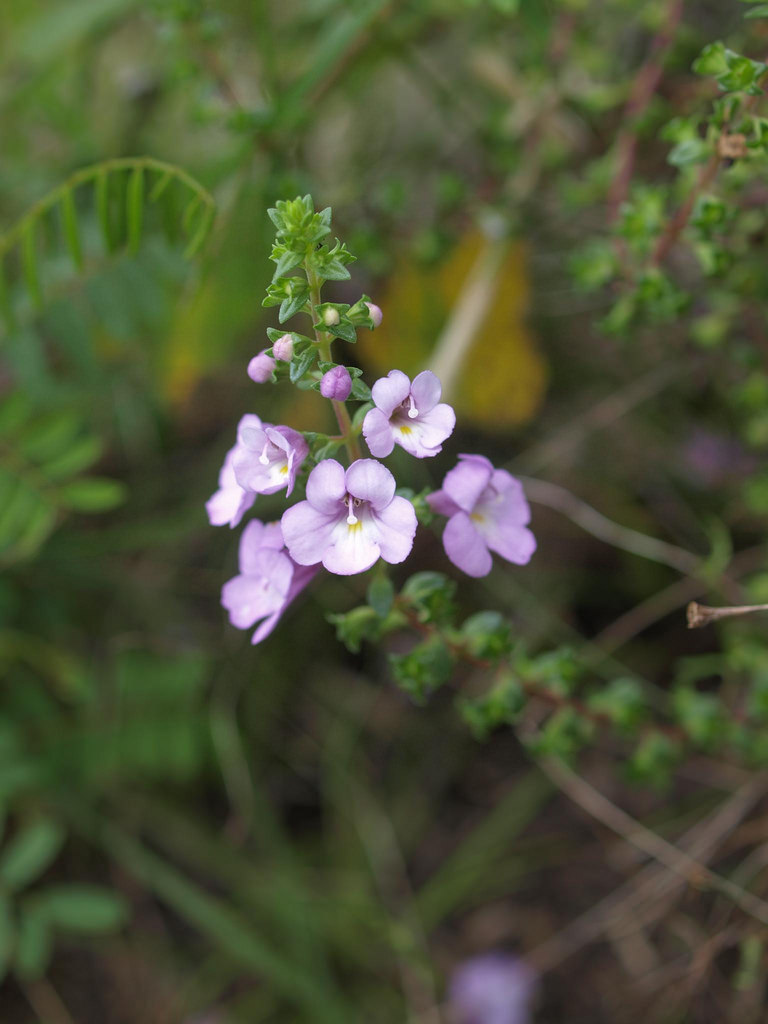Beautiful eyebright
(Euphrasia bella)

Description
Euphrasia bella, commonly known as beautiful eyebright, is a small herbaceous plant belonging to the Orobanchaceae family. It is native to the western United States, where it grows in subalpine and alpine habitats at elevations between 2,100 and 12,000 feet. Description: Euphrasia bella is a small annual herb that grows to a height of 1 to 8 inches. It has a basal rosette of leaves that are oval to oblong in shape and measure about 0.5 to 1 inch in length. The stem of the plant is branched and grows erect, bearing clusters of flowers at the top. The flowers are white to pinkish in color, with a yellow or greenish-yellow throat. They are bilaterally symmetrical and measure about 0.2 to 0.3 inches in length. The plant blooms from June to August. Euphrasia bella is a hemiparasitic plant, which means that it obtains some of its nutrients from the roots of other plants. It is commonly associated with grasses and other herbs, such as Lupinus, Festuca, and Erigeron. The plant has a short life cycle, and it completes its growth and reproduction within a single season. The flowers of Euphrasia bella are pollinated by bees, flies, and butterflies. Distribution and Habitat: The distribution of Beautiful Eyebright is limited to the western region of North America, particularly in the United States. The plant is primarily found in subalpine and alpine habitats, where it grows in open meadows, rocky slopes, and talus fields. It is commonly associated with grasses and other herbs, such as Lupinus, Festuca, and Erigeron. Euphrasia bella is found in California, Oregon, and Washington, where it grows at elevations ranging between 2,100 and 12,000 feet. Ecology: Uses: Euphrasia bella has traditional uses in herbal medicine to treat eye and respiratory problems. The plant contains iridoid glycosides, which have anti-inflammatory and antimicrobial properties. Some of the traditional uses of Euphrasia bella include: Eye problems: The plant is used to treat eye problems such as conjunctivitis, blepharitis, and eye strain. It is believed that the plant's anti-inflammatory properties help to reduce redness and irritation in the eyes. Respiratory problems: Euphrasia bella is also used to treat respiratory problems such as colds, coughs, and sinusitis. It is believed that the plant's expectorant properties help to loosen mucus and relieve congestion in the respiratory tract. Other uses: In addition to eye and respiratory problems, Euphrasia bella has also been used to treat other conditions, such as headaches, digestive problems, and skin disorders. However, scientific evidence for these uses is limited, and more research is needed to confirm their effectiveness. It is important to note that the traditional uses of Euphrasia bella have not been scientifically proven, and its use is not recommended without consulting a healthcare professional. Conservation Status: Euphrasia bella, also known as beautiful eyebright, is considered a species of concern in some states where it is found, including California and Washington. The populations of the plant are threatened by habitat loss and fragmentation due to human activities, such as mining, grazing, and recreational use. Climate change is also expected to impact the plant's distribution and habitat suitability. Efforts are underway to conserve Euphrasia bella. Some of the conservation measures include habitat restoration, population monitoring, and public education. In addition, the plant is listed as a sensitive species by the Bureau of Land Management and the U.S. Forest Service. The designation recognizes the plant's vulnerability to habitat destruction and the need to protect its habitat. Overall, conservation efforts for Euphrasia bella are ongoing, and more research is needed to better understand the plant's ecology, distribution, and population dynamics. Conclusion: Euphrasia bella is a small annual herbaceous plant that is native to the western United States. It grows in subalpine and alpine habitats and is commonly associated with grasses and other herbs. The plant is a hemiparasite and has traditionally been used in herbal medicine to treat eye and respiratory problems. Its populations are threatened by habitat loss and climate change, and conservation efforts are underway to protect the species.
Taxonomic tree:







